
Realism - I
Realism
Realism in the arts is the attempt to represent subject matter truthfully, without artificiality and avoiding artistic conventions, implausible, exotic and supernatural elements.
Realism has been prevalent in the arts at many periods, and is in large part a matter of technique and training, and the avoidance of stylization. In the visual arts, illusionistic realism is the accurate depiction of lifeforms, perspective, and the details of light and colour. Realist works of art may emphasize the mundane, ugly or sordid, such as works of social realism, regionalism, or kitchen sink realism.
There have been various realism movements in the arts, such as the opera style of verismo, literary realism, theatrical realism and Italian neorealist cinema. The realism art movement in painting began in France in the 1850s, after the 1848 Revolution. The realist painters rejected Romanticism, which had come to dominate French literature and art, with roots in the late 18th century.
Realism is the precise, detailed and accurate representation in art of the visual appearance of scenes and objects i.e., it is drawn in photographic precision. Realism in this sense is also called naturalism, mimesis or illusionism. Realistic art was created in many periods, and it is in large part a matter of technique and training, and the avoidance of stylization. It becomes especially marked in European painting in the Early Netherlandish painting of Jan van Eyck and other artists in the 15th century. However such "realism" is often used to depict, for example, angels with wings, which were not things the artists had ever seen in real life. Equally, 19th-century Realism art movement painters such as Gustave Courbet are by no means especially noted for precise and careful depiction of visual appearances; in Courbet's time that was more often a characteristic of academic painting, which very often depicted with great skill and care scenes that were contrived and artificial, or imagined historical scenes. It is the choice and treatment of subject matter that defines Realism as a movement in painting, rather than the careful attention to visual appearances. Other terms such as naturalism, naturalistic and "veristic" do not escape the same ambiguity, though the distinction between "realistic" (usually related to visual appearance) and "realist" is often useful, as is the term "illusionistic" for the accurate rendering of visual appearances.
The development of increasingly accurate representation of the visual appearances of things has a long history in art. It includes elements such as the accurate depiction of the anatomy of humans and animals, of perspective and effects of distance, and of detailed effects of light and colour. The Art of the Upper Paleolithic in Europe achieved remarkably lifelike depictions of animals, and Ancient Egyptian art developed conventions involving both stylization and idealization that nevertheless allowed very effective depictions to be produced very widely and consistently. Ancient Greek art is commonly recognised as having made great progress in the representation of anatomy, and has remained an influential model ever since. No original works on panels or walls by the great Greek painters survive, but from literary accounts, and the surviving corpus of derivative works (mostly Graeco-Roman works in mosaic) it is clear that illusionism was highly valued in painting. Pliny the Elder's famous story of birds pecking at grapes painted by Zeuxis in the 5th century BC may well be a legend, but indicates the aspiration of Greek painting. As well as accuracy in shape, light and colour, Roman paintings show an unscientific but effective knowledge of representing distant objects smaller than closer ones, and representing regular geometric forms such as the roof and walls of a room with perspective. This progress in illusionistic effects in no way meant a rejection of idealism; statues of Greek gods and heroes attempt to represent with accuracy idealized and beautiful forms, though other works, such as heads of the famously ugly Socrates, were allowed to fall below these ideal standards of beauty. Roman portraiture, when not under too much Greek influence, shows a greater commitment to a truthful depiction of its subjects.
Camille Corot
1796 -1875
Jean-Baptiste-Camille Corot (16 July 1796 – 22 February 1875), or simply Camille Corot, was a French landscape and portrait painter as well as a printmaker in etching. A pivotal figure in landscape painting, his vast output simultaneously referenced the Neo-Classical tradition and anticipated the plein-air innovations of Impressionism.
A pivotal figure in landscape painting, Jean-Baptiste Camille Corot was an influential and prolific artist, producing over 3,000 works during his lifetime, and inspiring countless numbers of forgeries and copies. Although he was not especially interested or gifted in art at a young age, he decided to make the professional switch from businessman to artist at the age of 26, and in 1821, immediately began with the study of landscapes. He focused on two types of landscapes, historical landscapes, containing ancient and mythological creatures, and realistic landscapes, mostly of Northern Europe, with faithful renditions of flora and fauna, often mixing the two genres together.
In his travels through Italy to study Renaissance paintings, he was entranced by the light of the countryside, which was to influence his color palette throughout his paintings. Although he was also entranced by the Italian women, he wrote that his goal in life was to be committed to painting, and thus he had no time for marriage.
Throughout the 1840’s his reputation grew as a great painter, and by 1848 he was selected as a jury member of the Paris Salon. In 1867, he was promoted to an officer of the Salon. In his later life, Corot was very financially successful, and he shared his wealth with all those around him. In 1871, he donated 2,000 francs to the Poor of Paris, and a year later he bought a house for his fellow artist Honore Daumier, who by then was blind and destitute. He also donated 10,000 francs to the widow of another fellow artist, Jean-Francois Millet, to help her support her children. In the year before his death at age 78, his friends and students, feeling that he was underappreciated and professionally neglected, presented him with a gold medal.

Self-portrait

Woman with a Pearl
1868–1870

A Woman Reading
1869/1870
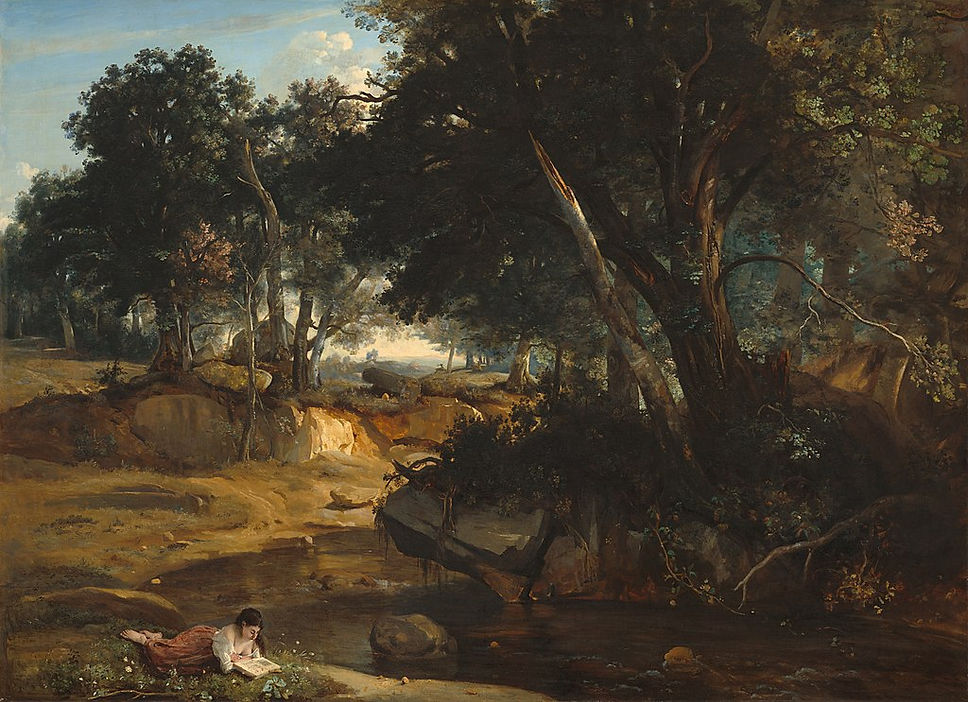
View of the Forest of Fontainebleau
1830

Ville d'Avray
ca. 1867

Bornova, İzmir
1873

Sibylle
circa 1870

Repose
1860

Stormy Weather, Pas de Calais
c. 1870

Portrait of Mariette Gambay ("La Songerie de Mariette")
1869–1870

Young Italian Woman from Papigno with Her Spindle
: c.1826 - c.1827

Italian Woman (Jewish Algerian Woman)
c.1870

Meadow with Two Large Trees
1865 - 1870

Pensive Young Woman
c.1865 - c.1870

The Cow Path
1860 - 1870
Honore Daumier
1808 - 1879
Honoré-Victorin Daumier (French: [ɔnɔʁe domje]; February 26, 1808 – February 10 or 11, 1879) was a French painter, sculptor, and printmaker, whose many works offer commentary on the social and political life in France, from the Revolution of 1830 to the fall of the second Napoleonic Empire in 1870. He earned a living producing caricatures and cartoons in newspapers and periodicals such as La Caricature and Le Charivari, for which he became well known in his lifetime and is still remembered today. He was a republican democrat (working class liberal), who satirized and lampooned the monarchy, politicians, the judiciary, lawyers, the bourgeoisie, as well as his countrymen and human nature in general.
He was also a serious painter, loosely associated with realism, sometimes blurring the boundaries between caricature and fine art. Although he occasionally exhibited at the Parisian Salon, his paintings were largely overlooked and ignored by the French public and critics of the day. Yet Daumier's fellow painters, as well as the poet and art critic Charles Baudelaire, noticed and greatly admired his work. Later generations would recognize Daumier as one of the great French artists of the 19th century, profoundly influencing a younger generation of impressionist and postimpressionist painters. Daumier was a tireless and prolific artist and produced more than 100 sculptures, 500 paintings, 1000 drawings, 1000 wood engravings, and 4000 lithographs.

Self-portrait

Gargantua (1831),
lithograph: King Louis Philippe sits on his throne

The Republic
1848

Don Quijote and Sancho Panza
c. 1868

Rue Transnonain, April 15, 1834
1834

A literary discussion in the second Gallery, published in Le Charivari
1864

Nadar in a balloon Nadar, elevating photography to the height of Art
1869

The Witnesses - The War Council
1872

Burden (The Laundress)

The Drunkenness of Silenus
c. 1849–50

The Third-Class Carriage
c. 1862–64
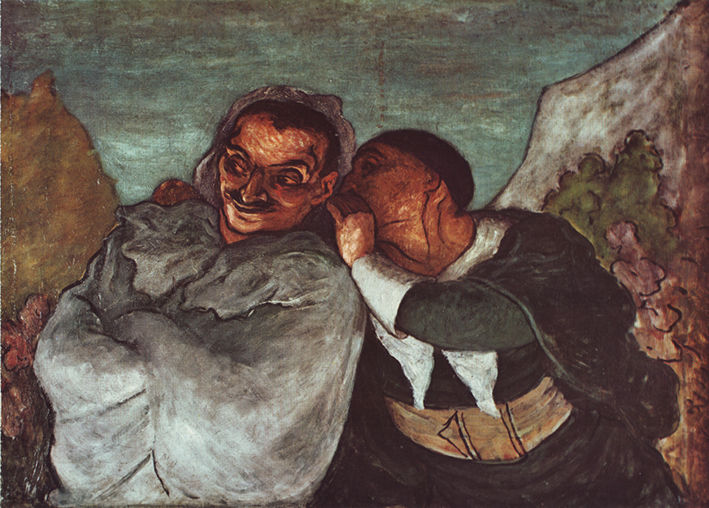
Crispin and Scapin
1864

Don Quixote and the Dead Mule
after 1864

'La Defenseur'
1860

The Laundress
1863
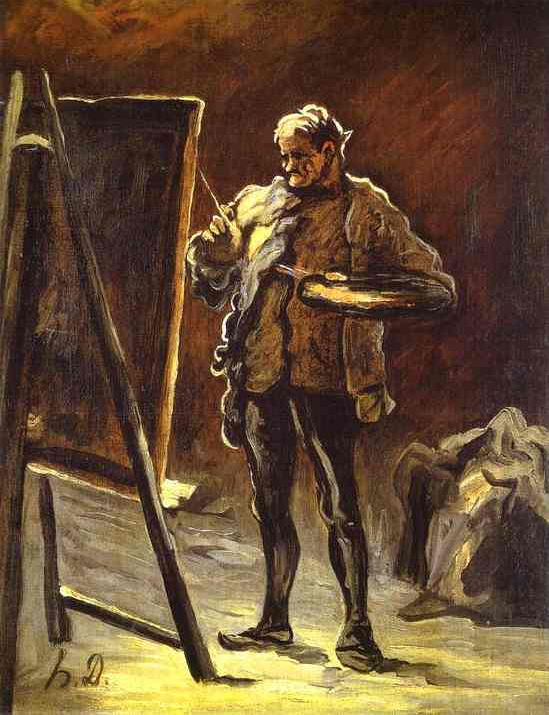
Artist In Front Of His Canvas
1870-1875
Jean-Francois Millet
1814 - 1875
Jean-François Millet (French pronunciation: [ʒɑ̃ fʁɑ̃swa milɛ]; 4 October 1814 – 20 January 1875) was a French artist and one of the founders of the Barbizon school in rural France. Millet is noted for his paintings of peasant farmers and can be categorized as part of the Realism art movement. Toward the end of his career, he became increasingly interested in painting pure landscapes. He is known best for his oil paintings but is also noted for his pastels, Conté crayon drawings, and etchings.
Noted for his scenes of peasant farmers, Jean Francois Millet was a founder of the Barbizon School of France, a Romantic movement in art, and was a Naturalistic, Realist painter. He learned Latin and knowledge of the major works of literature from village priests as a child, and in 1833 moved to Cherbourg to study painting. His first Salon submission, in 1839, but his second, a portrait, was accepted in 1840. After his first portrait was accepted by the Paris Salon, he returned to Cherbourg, to begin his career as a professional portrait painter. His first real Salon success was seven years later, in 1847, when he presented his panting The Winnower, which was bought by the government a year later. His success was short lived, however. The Captivity of the Jews in Israel was presented to the Salon in 1848, and it was scorned by the public and critics. This painting quickly disappeared, leading historians to think Millet had destroyed his own work.
Occasional failure notwithstanding, Millet’s popularity grew throughout the 1860’s, and he received many commissions, hosting a major showing of his work in 1867 in the Exposition Universeille. The next year, he was named an officer of the National Legion of Honor, and in 1870 he was elected as a jury member at the Paris Salon.
In 1875, three weeks before his death, Millet married his wife in a religious ceremony. They had been married in a civil ceremony in 1853.

Self-portrait
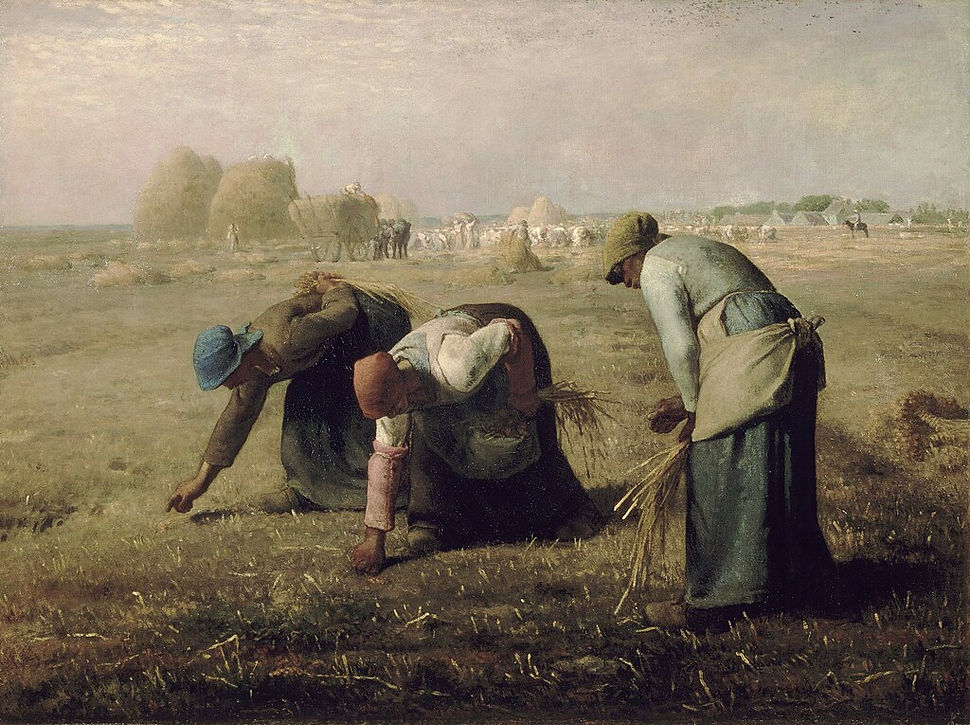
The Gleaners
1857

he Angelus
1857–1859

Hunting Birds at Night
1874

The Potato Harvest
1855

Going to Work
1851–1853
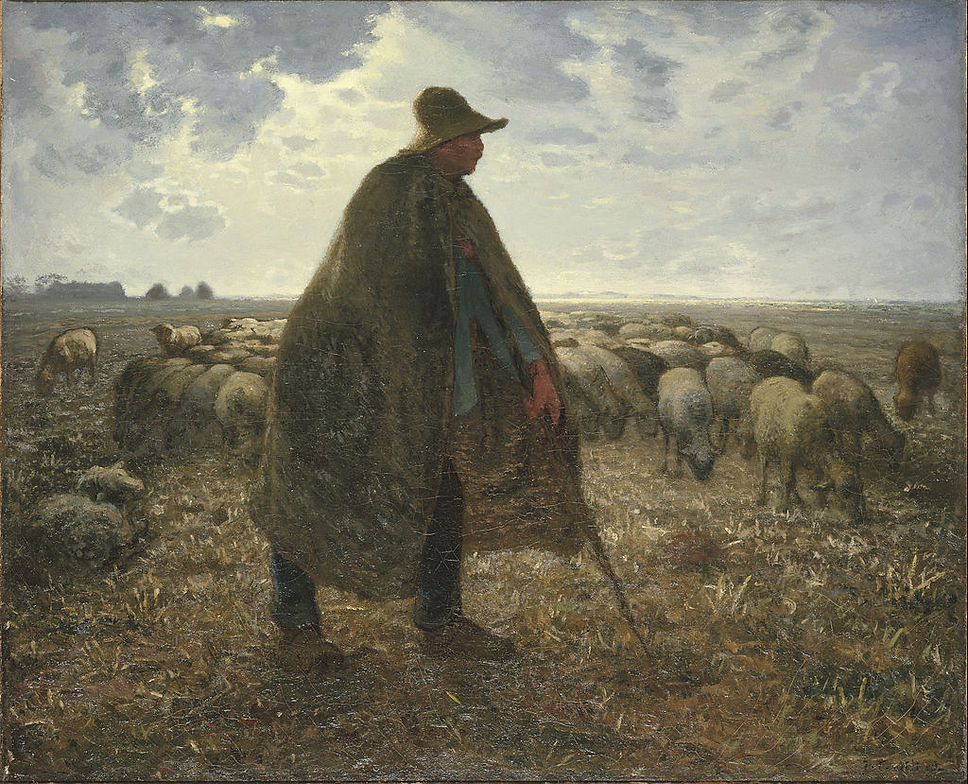
Shepherd Tending His Flock
early 1860s

The Goose Girl
1863
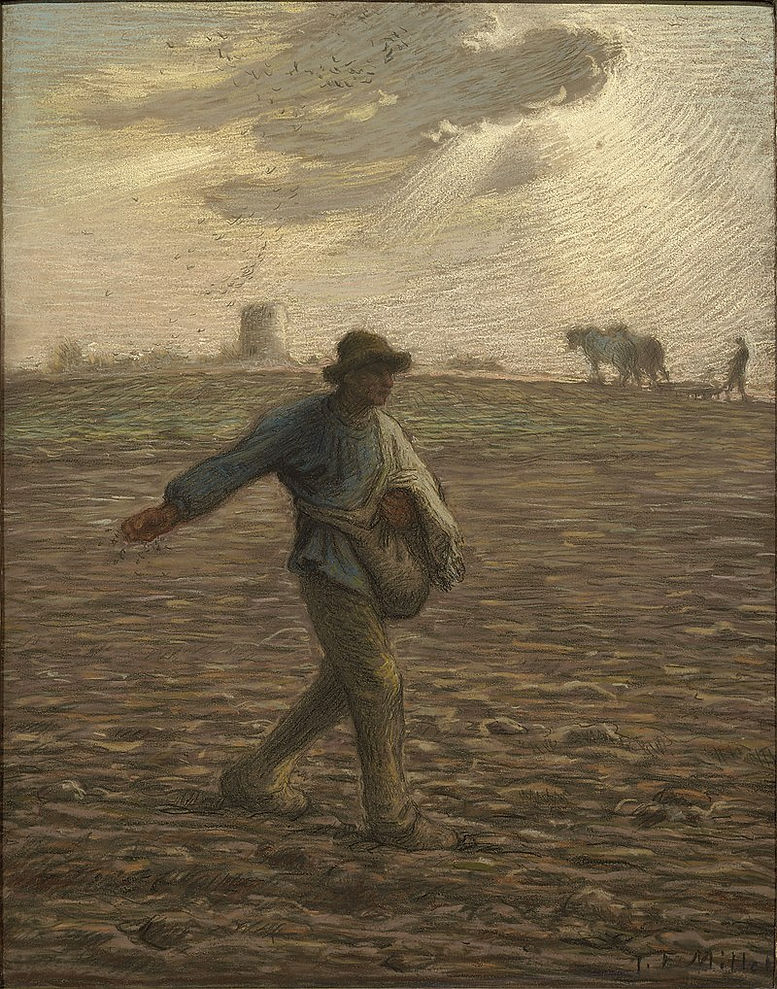
The Sower
c. 1865
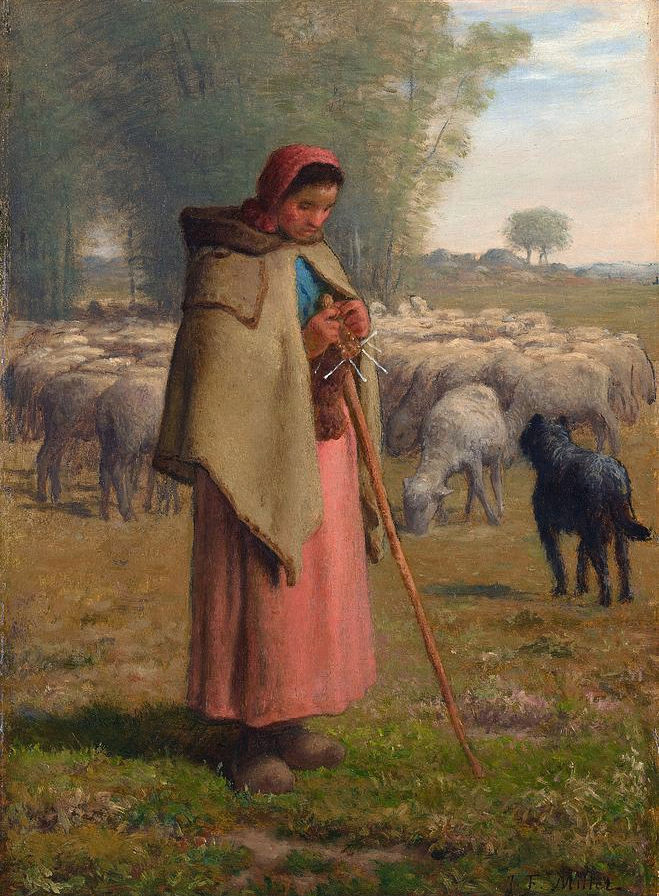
Young Girl Guarding her Sheep
c. 1860-62

Noonday Rest
1866

The potato growers

The Sleeping Seamstress

Nymph in the reeds

Spring
1868-73
Gustave Courbet
1819 - 1877
Jean Désiré Gustave Courbet (10 June 1819 – 31 December 1877) was a French painter who led the Realism movement in 19th-century French painting. Committed to painting only what he could see, he rejected academic convention and the Romanticism of the previous generation of visual artists. His independence set an example that was important to later artists, such as the Impressionists and the Cubists. Courbet occupies an important place in 19th-century French painting as an innovator and as an artist willing to make bold social statements through his work.
Courbet's paintings of the late 1840s and early 1850s brought him his first recognition. They challenged convention by depicting unidealized peasants and workers, often on a grand scale traditionally reserved for paintings of religious or historical subjects. Courbet's subsequent paintings were mostly of a less overtly political character: landscapes, seascapes, hunting scenes, nudes, and still lifes. Courbet was imprisoned for six months in 1871 for his involvement with the Paris Commune and lived in exile in Switzerland from 1873 until his death four years later.
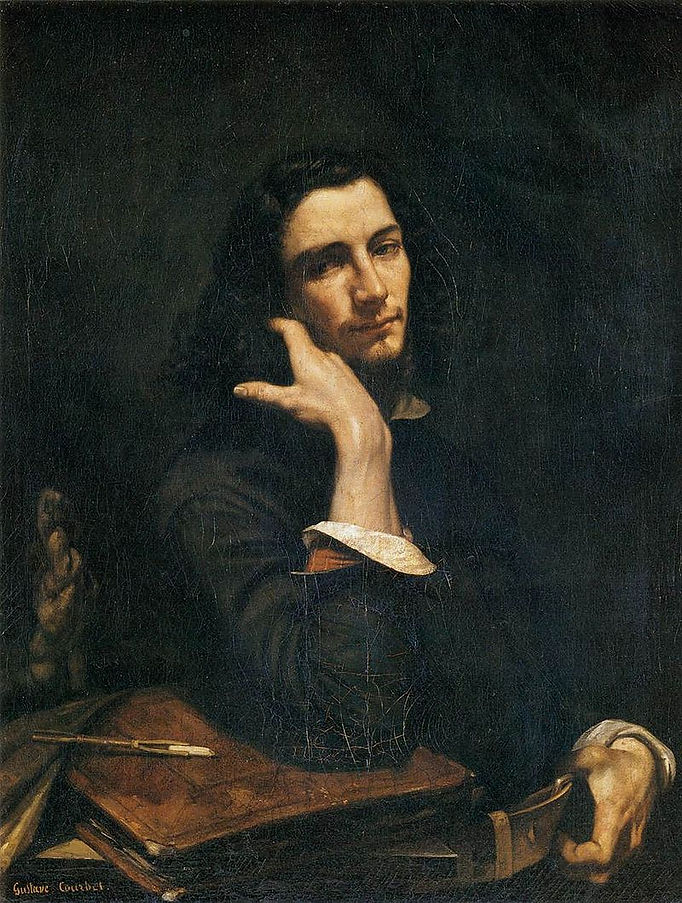
Self-Portrait (Man with Leather Belt)
c. 1845
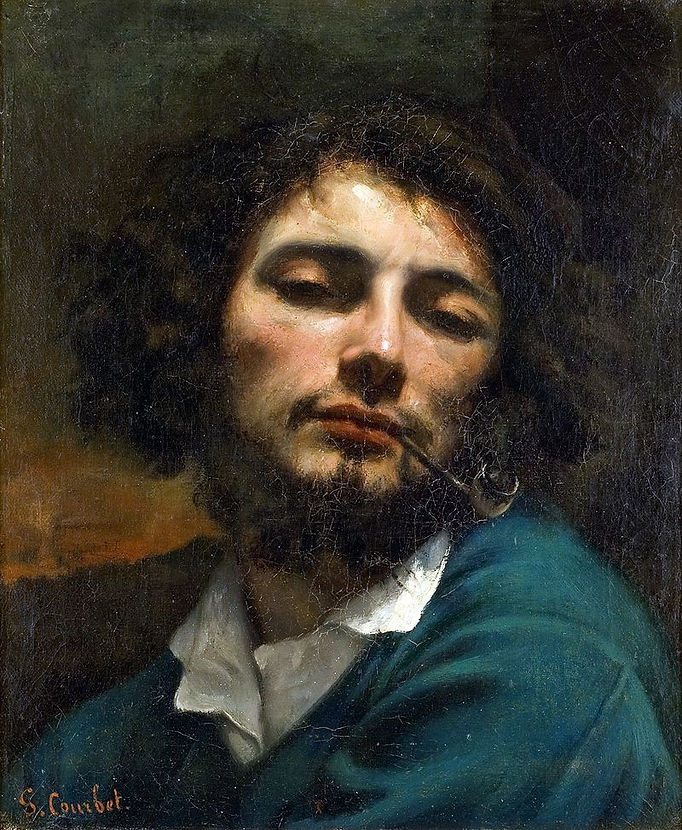
L'homme à la pipe (Self-portrait, Man with a pipe)
1848–49

The Stone Breakers
1849

The Artist's Studio (L'Atelier du peintre): A Real Allegory of a Seven Year Phase in my Artistic and Moral Life
1855

The Studio of the Painter (detail)
1855

Femme nue couchée
1862

Portrait of Jo (La belle Irlandaise)
1865–66

Le Sommeil (Sleep)
1866

Young Bather
1866

Self-Portrait with a Black Dog
1842

Self-portrait (The Desperate Man)
c. 1843–1845
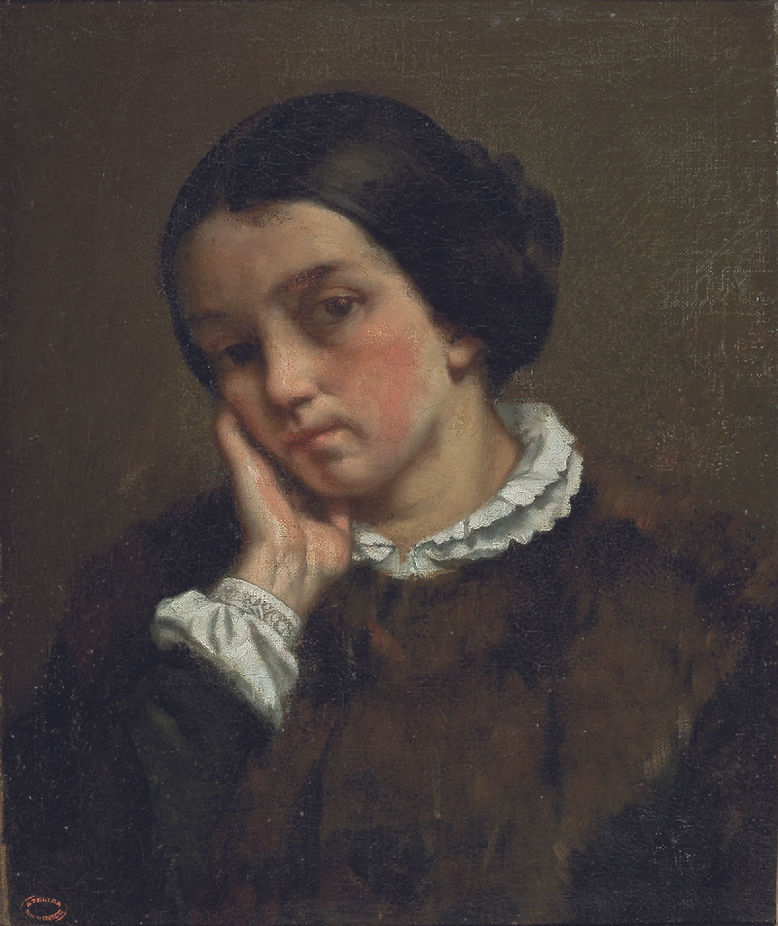
Zélie Courbet
1847

Portrait of Baudelaire
1848

Proudhon and His Children
1865

Spanish Woman
1854
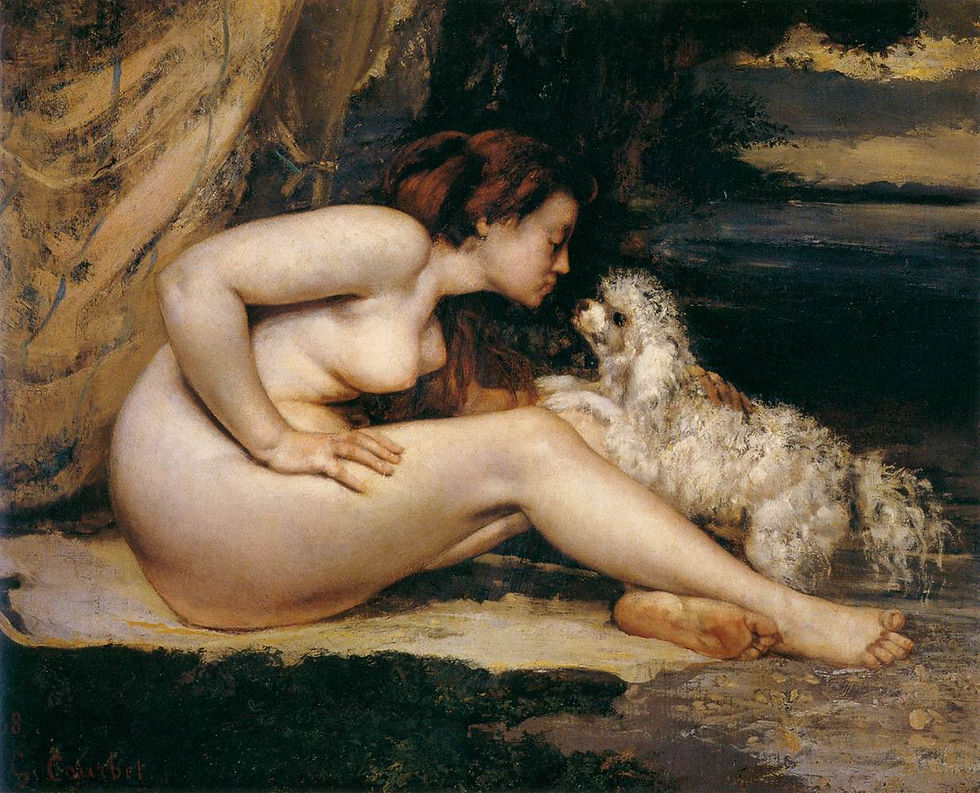
Nude Woman with a Dog (Femme nue au chien)
c. 1861–62

La Font (The Source)
1862

Les Bas Blancs (Woman with White Stockings)
1864

Woman with a Parrot
1866

The Woman in the Waves
1868

The Source
1868

The Hammock
1844

Les Baigneuses
1853

The Wrestlers
1853
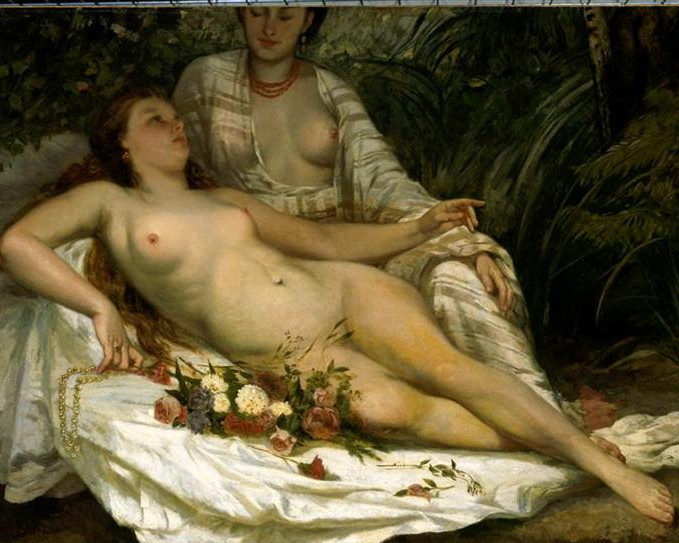
The Bathers
1858

The Meeting ("Bonjour, Monsieur Courbet")
1854

The Wheat Sifters (Les Cribleuses de blé)
1854

Grande baigneuse (Femme nue couchée au bord de l'eau)

Young Ladies Beside the Seine (Summer)
1856

Nude with drunken satyr

Trois baigneuses

Bather Sleeping by a Brook
1845

Nude Reclining by the Sea
1868

Sleeping nude

Reclining Nude

Reclining Nude

Sleeping Nude

Lot and His Daughters
1844

Bacchante
1844-47

Nude and the Snake Charmer

Young Women from the Village
1851
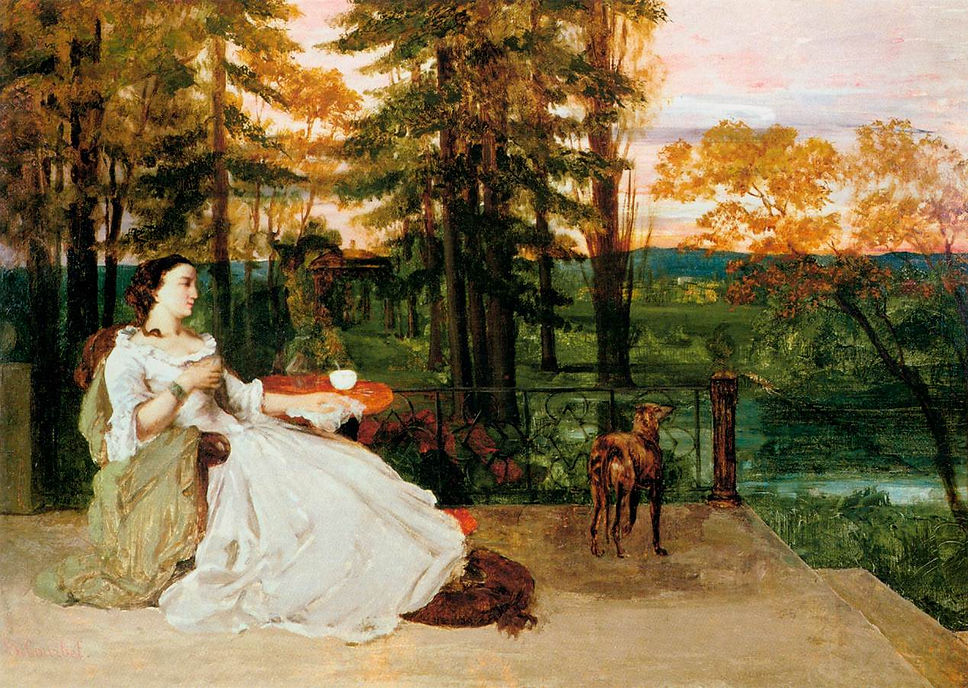
Woman of Frankfurt
1858

The Sleeping Spinner
1853
Jules Bastien-Lepage
1848 – 1884
Jules Bastien-Lepage (1 November 1848 – 10 December 1884) was a French painter closely associated with the beginning of naturalism, an artistic style that grew out of the Realist movement and paved the way for the development of impressionism. Émile Zola described Bastien-Lepage's work as "impressionism corrected, sweetened and adapted to the taste of the crowd."
His en plein air depictions of peasant life in the countryside were highly influential on many international artists, including George Clausen in England and Tom Roberts in Australia. He also won renown for his history paintings, among the most famous being Joan of Arc, now held at the Metropolitan Museum of Art in New York.
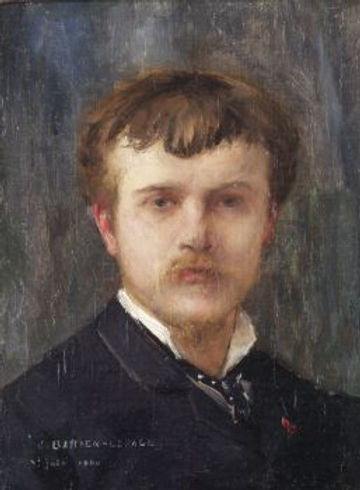
Self-portrait
1880

All Souls' Day
c. 1882

Portrait of Sarah Bernhardt
1879

Joan of Arc
1879

Achilles and Priam
1876

Haymaking (Les Foins)
1877

October
1878

Young Girl
1881

Pauvre Fauvette
1881
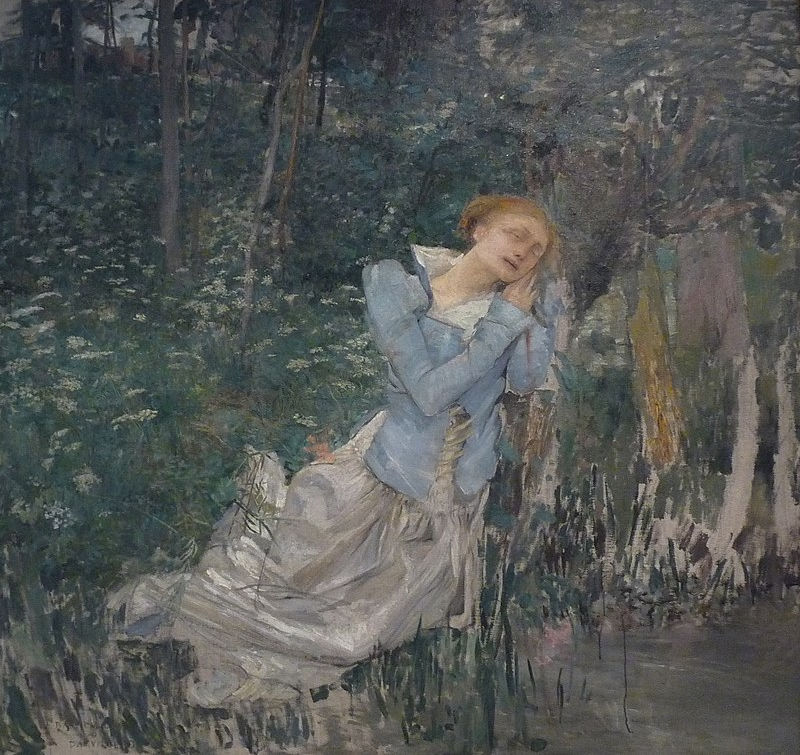
Ophelia
1881

L'Amour au Village
1882

Going to School
1882

Resting country people
c.1877
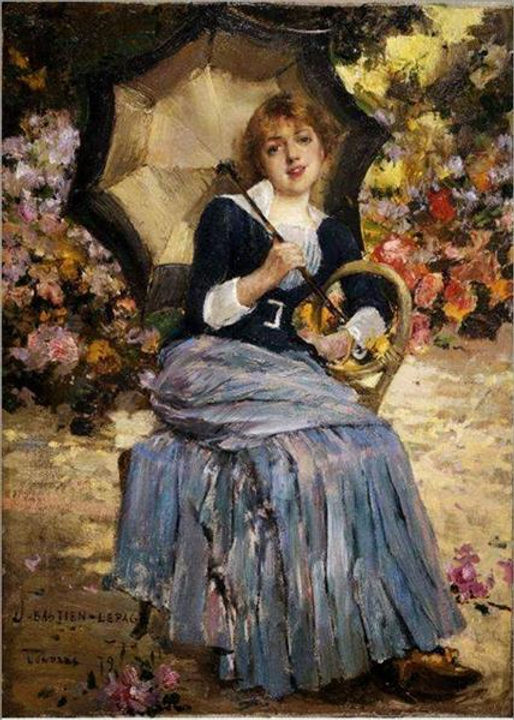
Parasol
1879

Study of a Nude
Ilya Repin
1844 – 1930
Ilya Yefimovich Repin (5 August [O.S. 24 July] 1844 – 29 September 1930) was a Russian painter who was born in what is now Ukraine. He became one of the most renowned artists in Russia in the 19th century. His major works include Barge Haulers on the Volga (1873), Religious Procession in Kursk Province (1880–1883), Ivan the Terrible and His Son Ivan (1885); and Reply of the Zaporozhian Cossacks (1880–1891). He is also known for the revealing portraits he made of the leading Russian literary and artistic figures of his time, including Mikhail Glinka, Modest Mussorgsky, Pavel Tretyakov, and especially Leo Tolstoy, with whom he had a long friendship.
Repin was born in Chuguev, in Kharkov Governorate of the Russian Empire. His father had served in an Uhlan Regiment in the Russian army, and then sold horses. Repin began painting icons at age sixteen. He failed at his first effort to enter the Imperial Academy of Fine Arts in Saint Petersburg, but went to the city anyway in 1863, audited courses, and won his first prizes in 1869 and 1871. In 1872, after a tour along the Volga River, he presented his drawings at the Academy of Art in St. Petersburg. The Grand Duke Alexander Alexandrovich awarded him a commission for a large scale painting, The Barge Haulers of the Volga, which launched his career. He spent two years in Paris and Normandy, seeing the first Impressionist expositions and learning the techniques of painting in the open air.
He suffered one setback in 1885 when his history portrait of Ivan the Terrible killing his own son in a rage caused a scandal, resulting in the painting being removed from exhibition. But this was followed by a series of major successes and new commissions. In 1898, with his second wife, he purchased a country house, The Penates, in Kuokkala, Finland (now Repino, Saint Petersburg), close to St. Petersburg, where they entertained Russian society.
In 1905, following the repression of street demonstrations by the Imperial government, he quit his teaching position at the Academy of Fine Arts. He welcomed the February Revolution in 1917, but was appalled by the violence and terror unleashed by the Bolsheviks following the October Revolution. In 1917, Russia lost control over the Grand Duchy of Finland, leading to the full independence of Finland. Following this event, Ilya Repin was unable to travel to St. Petersburg (renamed Leningrad), even for an exhibition of his own works in 1925. Repin died on 29 September 1930, at the age of 86, and was buried at the Penates.

Self-portrait (1887)

Barge Haulers on the Volga (1870–1873)

A Paris cafe (1875)

Sadko (1876)

Religious Procession in Kursk Province (1880–1883)

Ivan the Terrible and His Son Ivan

Portrait of Tolstoy (1887)

Anton Rubinstein (1881)
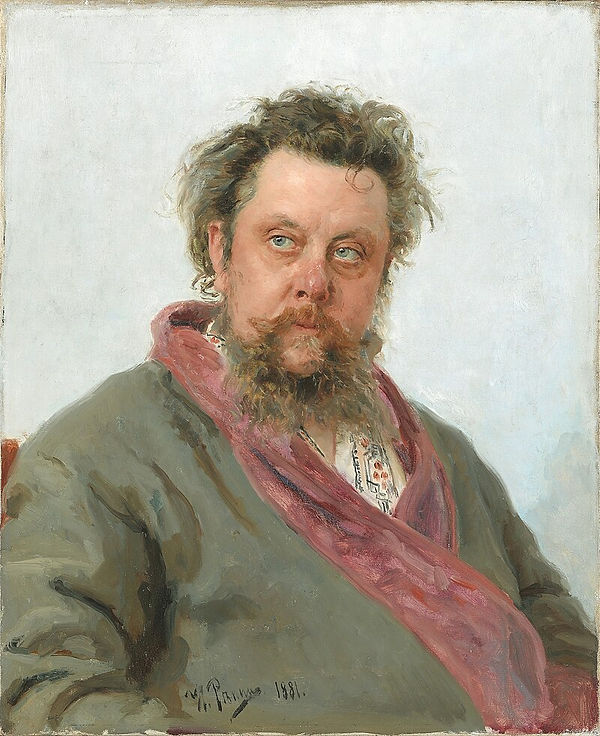
Modest Moussorgsky (1881)

Mikhail Glinka composing the opera Ruslan and Ludmilla (1887) (painted thirty years after Glinka's death)

Reply of the Zaporozhian Cossacks to Sultan Mehmed IV (1880–1891)

In the Sunlight: Portrait of Nadezhda Repina (1900)

Portrait of Sophie Menter, pianist and professor of music at the Saint Petersburg Conservatory

Ukrainian Woman (1876)

The Blonde Woman (1898, portrait of Tevashova)

Gogol burning the manuscript of the second part of "Dead Souls" (1909)
Konstantin Korovin
1861 - 1939

Konstantin Alekseevich Korovin (December 5, 1861, Moscow - September 11, 1939, Paris) - Russian painter, follower of the French impressionists, one of the most famous Moscow artists of the Silver Age, teacher and writer; younger brother of genre writer Sergei Korovin. Academician of the Imperial Academy of Arts (since 1905). Chief decorator and designer of Moscow theaters (1910-1922).
Theatrical Composition. 1910s
Two Ladies on a Terrace. 1911
Moonlit Night, Winter. 1913
Pier in Gurzuf. 1914
Lilac. 1915
Feodor Chaliapin. 1915
Gurzuf. 1916
Spring. 1917
Moonlit Night. Paris. 1929
Parisian Street Scene
Paris. 1933
Paris, Arch of Saint Denis. 1930s
1891Portrait of Konstantin Korovin by Valentin Serov
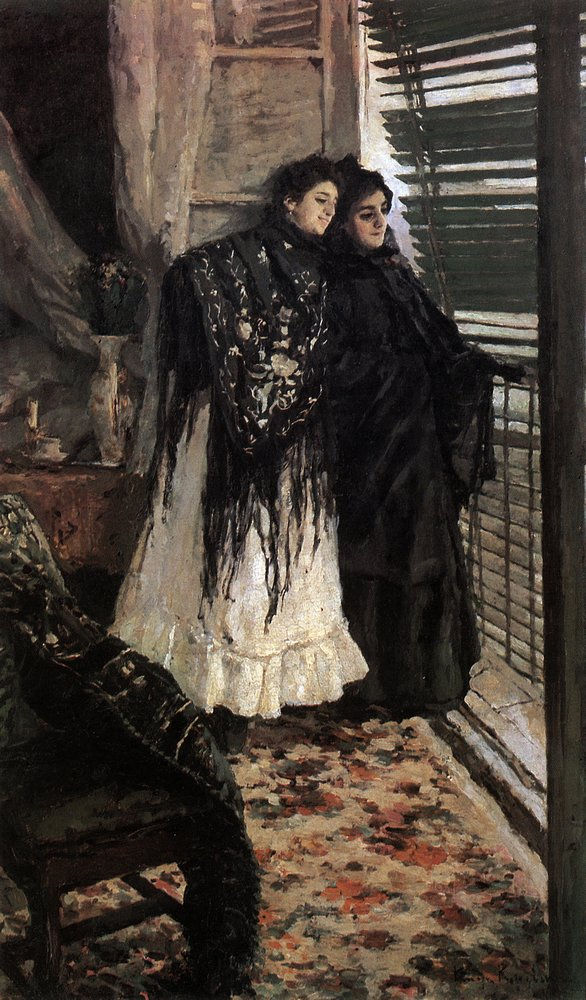
On the Balcony, Spanish Women Leonora and Amparo, 1897–1898

Twilight in a Room. 1880s

Parisian Cafe. Late 1890s

Paris. Café de la Paix. 1906

Two Ladies on a Terrace. 1911

Moonlit Night, Winter. 1913

Pier in Gurzuf. 1914
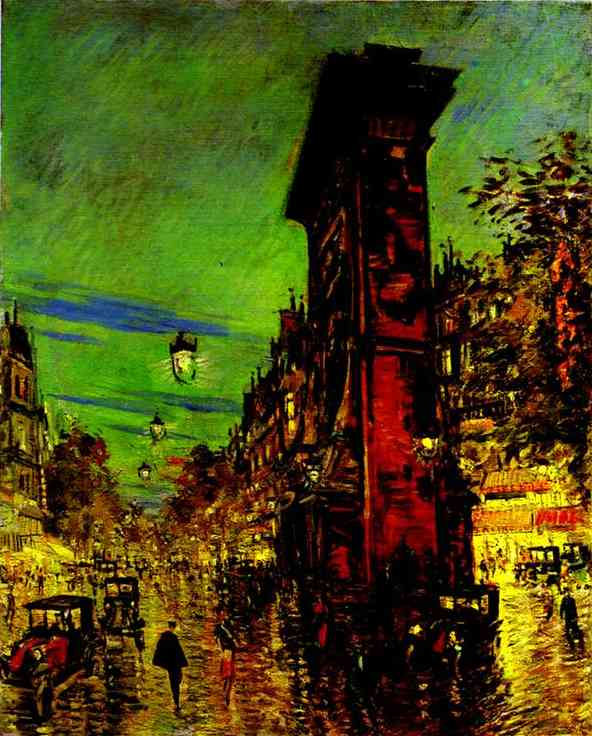
Paris, Arch of Saint Denis. 1930s

Lilac. 1915

Feodor Chaliapin. 1915

"Northern Idyll". 1886.

"Paper Lanterns". 1898.

"Girl with a Guitar". 1914

"Boulevard Montmartre at Night". 1922
Filipp Malyavin
1869 – 1940
Filipp Andreevich Malyavin (October 22 1869 – December 23, 1940) was a Russian painter and draftsman. Trained in icon-painting as well as having studied under the great Russian realist painter Ilya Repin, Malyavin is unusual among the Russian artists of the time for having a peasant background. It is possibly due to this that his paintings often depict peasant life, and his most famous work, Whirlwind, shows peasant women dancing.

Filipp Malyavin. Self-portrait

Filipp Malyavin.

Filipp Malyavin. Portrait of the Singer Nadezhda Plevitskaya

Filipp Malyavin.

Filipp Malyavin. Portrait of Alexandra Balashova
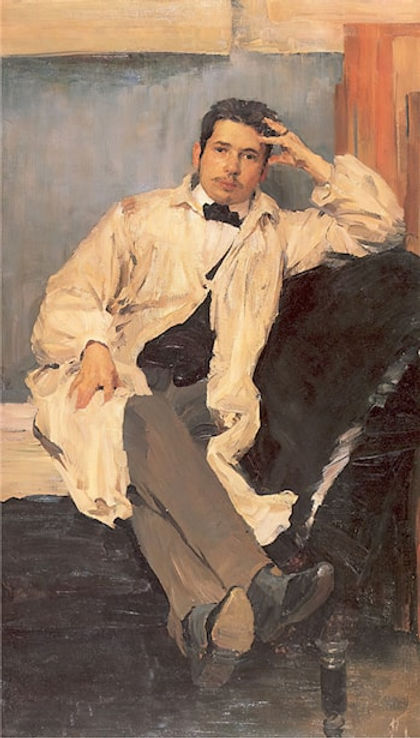
Filipp Malyavin. Portrait of the Artist Konstantin Somov

Filipp Malyavin. Self Portrait with Wife and Daughter

Filipp Malyavin.

Filipp Malyavin.

Filipp Malyavin.

Filipp Malyavin. Danae

Filipp Malyavin. A model in hat

Filipp Malyavin.

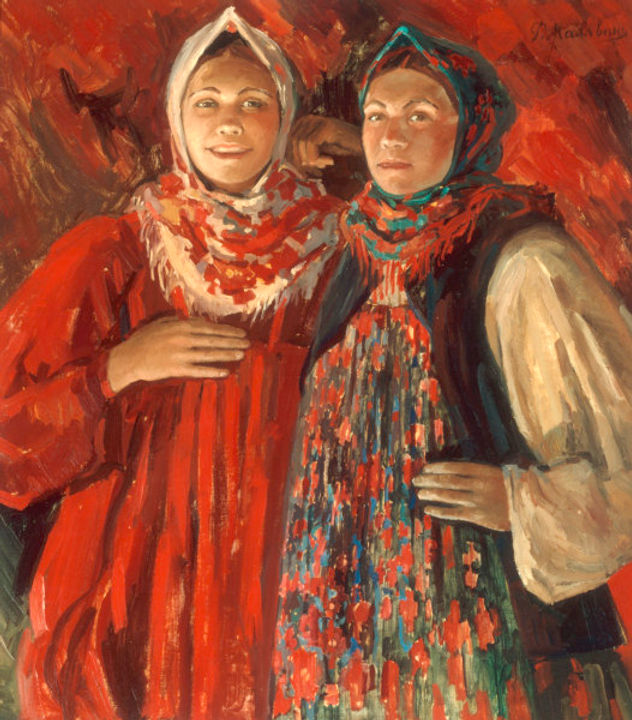
Filipp Malyavin.

Filipp Malyavin.
Filipp Malyavin. Sledding

Filipp Malyavin.

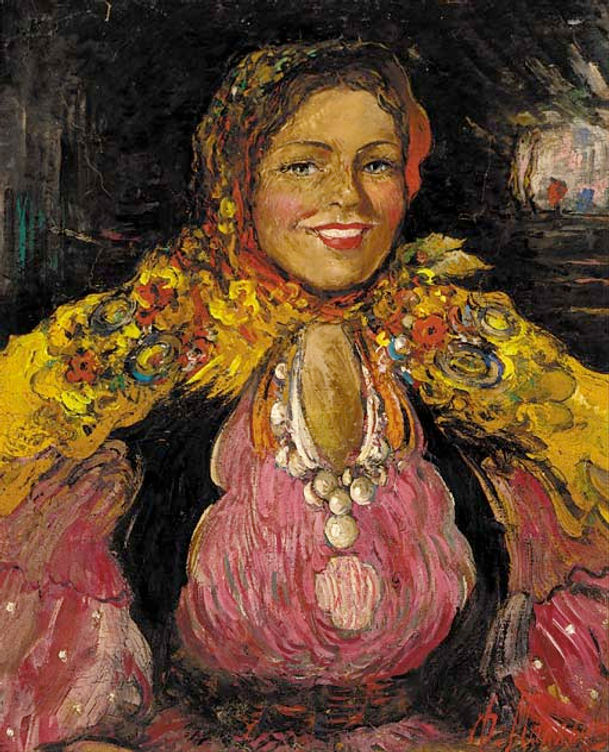
Filipp Malyavin.
Filipp Malyavin.

Filipp Malyavin.
Nikolai Rerikh
1874 - 1947
Nikolai Konstantinovich Rerikh (Russian: Николай Константинович Рерих), better known as Nicholas Roerich (/ˈrɛrɪk/; October 9, 1874 – December 13, 1947), was a Russian painter, writer, archaeologist, theosophist, philosopher, and public figure. In his youth he was influenced by Russian Symbolism, a movement in Russian society centered on the spiritual. He was interested in hypnosis and other spiritual practices and his paintings are said to have hypnotic expression.
Born in Saint Petersburg, to a well-to-do Baltic German father and to a Russian mother, Roerich lived in various places in the world until his death in Naggar, India. Trained as an artist and a lawyer, his main interests were literature, philosophy, archaeology, and especially art. Roerich was a dedicated activist for the cause of preserving art and architecture during times of war. He was nominated several times to the longlist for the Nobel Peace Prize. The so-called Roerich Pact (for the protection of cultural objects) was signed into law by the United States and most other nations of the Pan-American Union in April 1935


Nikolai Konstantinovich Roerich
Guests from Overseas, 1901 (Varangians in Rus')

Mother of the World (1924)

Messenger, 1897

Treasure of angels, 1905

Kiss to the Earth, 1912, scenery for Diaghilev’s The Rite of Spring ballet

Solveig's Song, 1912

Saint Olga, 1915

Saint Pantaleon, 1916

And We See, from the "Sancta" Series, 1922

And We Are Opening the Gates, from the "Sancta" Series, 1922

Monhegan, Maine, 1922

The Messenger, 1922

And We Are Trying, from the "Sancta" Series, 1922